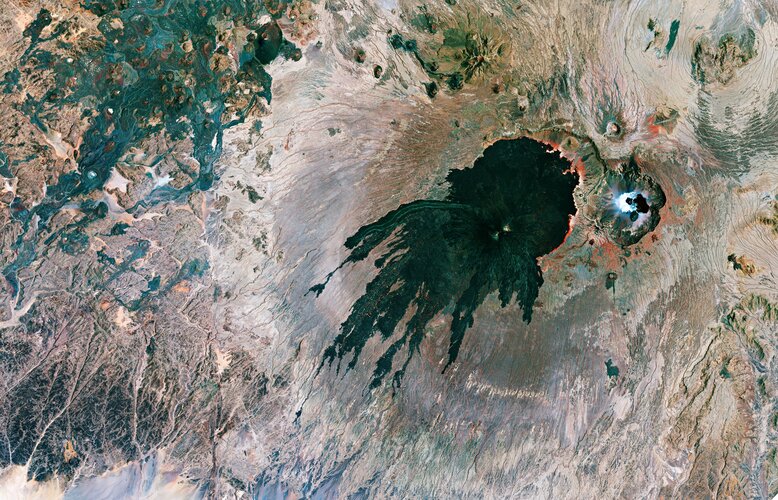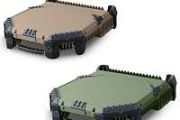
Copernical Team
Martian global dust storm ended winter early in the south
 A dust storm that engulfed the entire Red Planet in 2018 destroyed a vortex of cold air around the Martian south pole and brought an early spring to the hemisphere. By contrast, the storm caused only minor distortions to the polar vortex in the northern hemisphere and no dramatic seasonal changes. Dr Paul Streeter of The Open University's Faculty of Science, Technology, Engineering and Mathemati
A dust storm that engulfed the entire Red Planet in 2018 destroyed a vortex of cold air around the Martian south pole and brought an early spring to the hemisphere. By contrast, the storm caused only minor distortions to the polar vortex in the northern hemisphere and no dramatic seasonal changes. Dr Paul Streeter of The Open University's Faculty of Science, Technology, Engineering and Mathemati Meet the Martian meteorite hunters
 A team at the Natural History Museum (NHM), London is paving the way for future rovers to search for meteorites on Mars. The scientists are using the NHM's extensive meteorite collection to test the spectral instruments destined for the ExoMars rover Rosalind Franklin, and develop tools to identify meteorites on the surface of the red planet. The project is being presented today (23 July) at the
A team at the Natural History Museum (NHM), London is paving the way for future rovers to search for meteorites on Mars. The scientists are using the NHM's extensive meteorite collection to test the spectral instruments destined for the ExoMars rover Rosalind Franklin, and develop tools to identify meteorites on the surface of the red planet. The project is being presented today (23 July) at the ALMA images moon-forming disk around alien world
 Astronomers have for the first time imaged a moon-forming disk around an exoplanet.
Scientists expect the discovery - made using the Atacama Large Millimetre/submillimeter Array and detailed Thursday in the journal Astrophysical Journal Letters - to aid the study of planet and moon formation in young solar systems.
"Our work presents a clear detection of a disc in which satelli
Astronomers have for the first time imaged a moon-forming disk around an exoplanet.
Scientists expect the discovery - made using the Atacama Large Millimetre/submillimeter Array and detailed Thursday in the journal Astrophysical Journal Letters - to aid the study of planet and moon formation in young solar systems.
"Our work presents a clear detection of a disc in which satelli With cutting-edge hypersonics, Russia leads in new arms race
 The Avangard, the Kinzhal and now the Zircon - Russia is leading the race to develop a range of new hypersonic weapons that President Vladimir Putin has dubbed "invincible".
Moscow's latest step came this week with another successful test of the Zircon, a ship-launched hypersonic missile.
Fired from one of Russia's most powerful warships, the Admiral Gorshkov frigate, a Zircon travellin
The Avangard, the Kinzhal and now the Zircon - Russia is leading the race to develop a range of new hypersonic weapons that President Vladimir Putin has dubbed "invincible".
Moscow's latest step came this week with another successful test of the Zircon, a ship-launched hypersonic missile.
Fired from one of Russia's most powerful warships, the Admiral Gorshkov frigate, a Zircon travellin Counting carbon
 Video:
00:03:40
Video:
00:03:40
The Paris Agreement adopted a target for global warming not to exceed 1.5°C. This sets a limit on the additional carbon we can add to the atmosphere – the carbon budget. Only around 17% of the carbon budget is now left. That is about 10 years at current emission rates.
Each country reports its annual greenhouse gas emissions to the United Nations. Scientists then set these emissions against estimates of the carbon absorbed by Earth’s natural carbon sinks. This is known as the bottom-up approach to calculating the carbon budget.
Another way to track carbon sources and sinks is
Week in images: 19 - 23 July 2021

Week in images: 19 - 23 July 2021
Discover our week through the lens
Duneside view of ESA's technical heart
 Image:
Duneside view of ESA's technical heart
Image:
Duneside view of ESA's technical heart Earth from Space: Tarso Toussidé, Chad

The Tarso Toussidé volcanic massif is featured in this false-colour composite image captured by the Copernicus Sentinel-2 mission.
Better understanding of Earth’s atmospheric chemistry from studying Mars?

Long-term studies of ozone and water vapour in the atmosphere of Mars could lead to better understanding of atmospheric chemistry for the Earth. A new analysis of data from ESA's Mars Express mission has revealed that our knowledge of the way these atmospheric gases interact with each other is incomplete.
Scientists determine Mars crustal thickness

Based on the analysis of marsquakes recorded by NASA's InSight mission, the structure of Mars's crust has now been determined in absolute numbers for the first time. Beneath the InSight landing site, the crust is either approximately 20 or 39 kilometers thick. That is the result of an international research team led by geophysicist Dr.






























